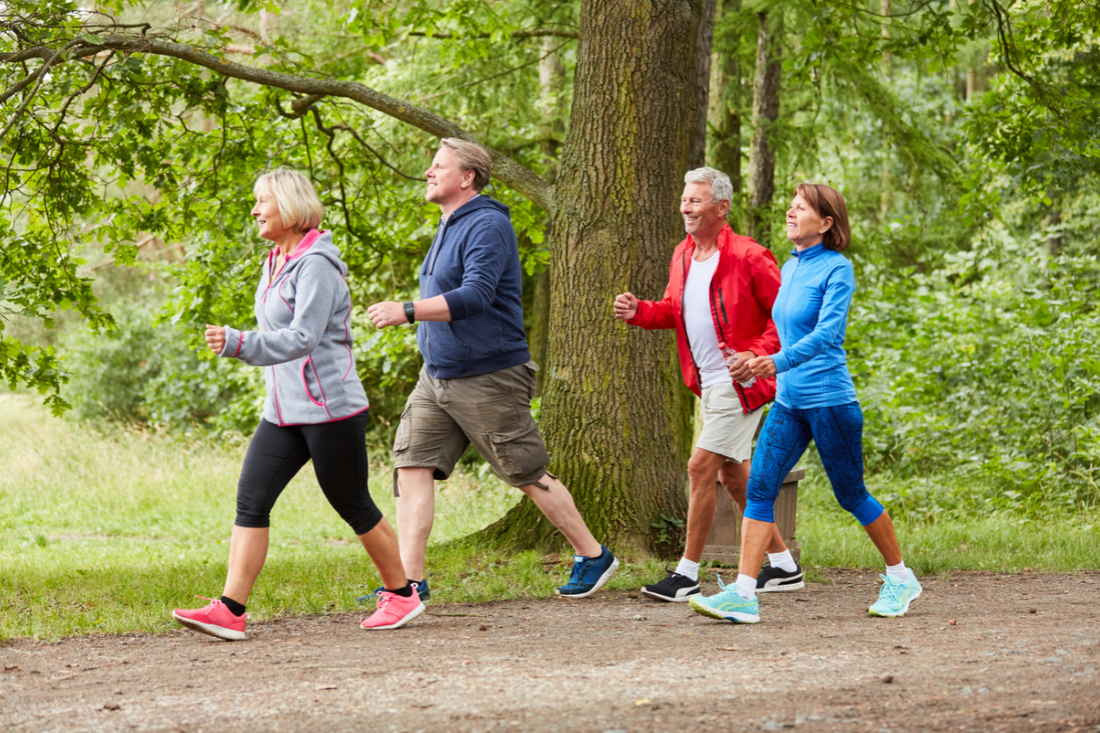Walk to Beat Diabetes
One of the most common questions about diabetics revolves around their blood sugar levels: What are the ideal blood sugar readings? How do fasting blood sugar levels and post-meal (post-prandial) readings influence HbA1c? This three-month average provides an overview of long-term blood sugar control. Apart from these commonly asked questions, many people try to figure out the role of physical activity in managing diabetes. Specifically, how much exercise is optimal for diabetics? While these are crucial concerns, the underlying answer lies in understanding healthy blood sugar levels and integrating physical activities, like walking, into daily life to achieve these goals.
Understanding Diabetes
Diabetes is a group of metabolic disorders generally associated with elevated blood sugar levels due to inadequate insulin production or inefficient insulin use. As one of the multiple prevalent health conditions of our time, diabetes poses serious health challenges specifically for people in their late 30s and above. When unmanaged, it can lead to complications affecting the heart, kidneys, eyes, and other organs, making it one of the foremost causes of high mortality rates worldwide.
There are two primary types of diabetes:
- Type 1 Diabetes: An autoimmune disorder where the pancreas produces little to no insulin.
- Type 2 Diabetes: A condition often associated with lifestyle factors, where the body either resists the effects of insulin or doesn't produce enough of it.
Both types require diligent management to prevent complications and maintain a good quality of life.
Target Blood Sugar Levels for Diabetics
For individuals with diabetes, the American Diabetes Association (ADA) recommends maintaining:
- Fasting blood sugar: Below 126 mg/dL.
- Post-meal blood sugar (2 hours after eating): Below 200 mg/dL.

Achieving these levels requires a combination of a balanced diet and regular, regular physical activity. Maintaining these levels significantly contributes to controlling HbA1c, as fasting glucose accounts for approximately 70% of HbA1c levels.
Diabetes is a manageable condition with consistent effort. By monitoring blood sugar regularly and making healthy lifestyle choices, individuals can effectively control their blood glucose levels. Additionally, the World Health Organization (WHO) and ADA suggest including exercise in the daily routine as a cornerstone of diabetes management.
Exercise Recommendations for Diabetics
Physical activity is essential for managing diabetes. The guidelines recommend:
- At least 150 minutes of moderate aerobic activity per week, spread over three or more days with no more than two consecutive days of inactivity.
- Resistance training twice weekly, targeting major muscle groups.
- Minimizing sedentary time: Avoid sitting for more than 90 minutes without moving.
Walking, in particular, stands out as one of the most accessible and effective exercises for diabetics. Regular walking reduces the risk of diabetes-related complications by 50-60%. Despite barriers like busy schedules or inadequate infrastructure, finding ways to walk daily can significantly improve health outcomes.
Understanding Blood Sugar Levels
| Category | Fasting (mg/dL) | 2 Hours After a Meal (mg/dL) |
|-------------------------|---------------------|-----------------------------------|
| Normal | 60–99 | Less than 140 |
| Pre-diabetes | 100–125 | 140–199 |
| Diabetes | 126 or above | 200 or above |
Note: Symptoms such as thirst, frequent urination, blurred vision, or weight loss may also indicate high blood sugar levels.
Walking: The Best Exercise for Diabetics Walking provides a simple yet comprehensive way to manage diabetes. It benefits the body in numerous ways, making it a cornerstone for diabetics aiming to improve their overall health.
1. Helps Manage Body Weight: Diabetes often leads to weight gain, exacerbating health risks. Walking provides a full-body workout that helps burn calories and shed excess fat. A 30-minute daily walking routine can aid in weight loss, improve cardiovascular health, and manage cholesterol levels.
2. Boosts Metabolism: Walking enhances digestion and supports gut health. It alleviates issues like bloating and discomfort while speeding up the metabolism. By balancing the calories consumed and burned, walking improves blood sugar control and leaves you feeling energetic.
3. Reduces Post-Meal Blood Sugar Spikes: A study from the University of Otago in New Zealand found that short walks after meals reduce blood sugar levels by up to 12%. For diabetics, this translates to better digestion and improved nutrient absorption. Additionally, post-meal walks can lower insulin requirements, making it easier to manage the condition.
4. Curbs Diabetes-Related Complications: Diabetes increases the risk of complications like heart disease, high blood pressure, and joint problems. Walking strengthens the heart, regulates blood pressure, and improves muscle function. Regular walking also boosts immunity, helping the body combat illnesses.
5. Improves Mental Well-Being: The psychological toll of diabetes often leads to stress, anxiety, and depression. Walking offers a natural remedy by releasing endorphins, which enhance mood and reduce stress. Walking in nature adds to this benefit, creating a sense of calm and rejuvenation.
Benefits of Walking at a Glance
- Enhances blood sugar control.
- Increases the body’s natural ability to use insulin effectively.
- Reduces the risk of cardiovascular diseases.
- Improves HDL ("good") cholesterol and lowers LDL ("bad") cholesterol.
- Reduces stress and improves emotional health.
- Strengthens bones and muscles.

How to Walk Regularly Despite Challenges
Modern lifestyles often limit possibilities for regular training or exercise. However, buying home exercise equipment, such as a treadmill, offers a practical and comfortable solution. A treadmill permits you to walk comfortably regardless of weather, time constraints, or outdoor conditions.
At Energie Fitness, we deliver a range of high-quality treadmills tailored to suit individual needs. Start with a minimum of 5-10 minutes daily and gradually increase to 30-60 minutes. With constant effort, you can not only control diabetes but also enhance general fitness and well-being.
Conclusion
Walking is more than just an exercise; it’s a transformative habit that can help diabetics lead healthier lives. It offers numerous physical and mental health benefits while reducing the risks associated with high blood sugar levels. Whether outdoors or on a treadmill, regular walking is a simple yet powerful tool in the fight against diabetes. Take the right step today — your health is worth it!




